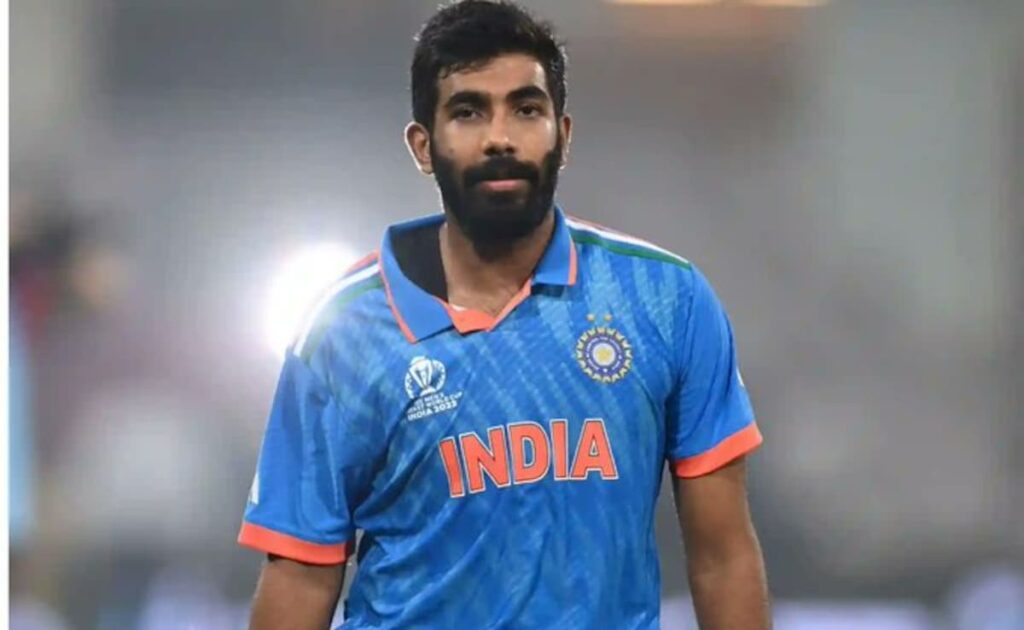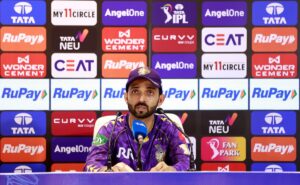
Gautam Gambhir, BCCI Fired Major 'Jasprit Bumrah' Warning By Ravi Shastri: "Very Careful..."
Jasprit Bumrah Workload Management: Ravi Shastri Issues Critical Warning to BCCI and Gautam Gambhir
Table of Contents
Jasprit Bumrah’s unique bowling action has made him one of cricket’s most lethal fast bowlers, but also requires careful workload management. | Photo Credit: AFP
Former Indian head coach Ravi Shastri has issued a critical warning regarding Jasprit Bumrah workload management ahead of the upcoming Test series against England. Speaking on The ICC Review, Shastri emphasized that the Board of Control for Cricket in India (BCCI) and new head coach Gautam Gambhir must exercise extreme caution in handling India’s premier fast bowler to avoid another injury setback. This advice comes in the wake of Bumrah’s history of prolonged absences from international cricket due to various injuries.
Shastri’s Critical Warning on Jasprit Bumrah Workload Management
Jasprit Bumrah workload management has become a crucial topic of discussion in Indian cricket circles, with Shastri being particularly vocal about the issue. “I would be very, very careful [with Bumrah],” Shastri emphasized during his recent interview. His recommendation is clear and specific: “I would give him two Test matches at a time and then wait for the break. Ideally, make him play four [out of five Tests].”
This deliberate approach to Jasprit Bumrah workload management highlights the delicate balance between maximizing the impact of India’s bowling spearhead and ensuring his long-term availability. Shastri, who worked closely with Bumrah during his tenure as India’s head coach from 2017 to 2021, understands the pacer’s body mechanics better than most. His warning comes from first-hand experience of managing Bumrah through international tours and witnessing the toll that continuous cricket takes on fast bowlers with unique actions.
Shastri’s Key Recommendations for Jasprit Bumrah Workload Management
- Limit Bumrah to playing two Test matches consecutively
- Provide strategic rest periods between matches
- Ideally use him in only four of the five Test matches against England
- Listen to Bumrah’s feedback about his body condition
- Be cautious about overusing him even if he starts the series well
Bumrah’s Injury History and Recovery Process
The urgency behind proper Jasprit Bumrah workload management stems from his concerning injury history. The pacer has faced multiple setbacks, including a prolonged absence following the Test series against Australia. His unique, unorthodox bowling action—while being his greatest weapon—also puts significant stress on his body, particularly his lower back and shoulders.
Shastri highlighted the importance of being proactive rather than reactive in Jasprit Bumrah workload management: “You’ll be tempted to make him play five [Tests] if he starts off in a great manner, but it’s how his body pulls up.” This insight acknowledges the natural tendency to overuse a performer who’s in excellent form, but cautions against succumbing to this temptation.
Perhaps most importantly, Shastri advocated for Bumrah’s involvement in his own workload management: “He should be given the first opportunity to say, ‘Yes, a little, [I am] feeling the niggle. A break would help.’ Give him that break.” This player-centric approach to workload management recognizes that Bumrah himself is best positioned to understand the early warning signs his body gives.
Strategic Importance of England Test Series
The upcoming Test series against England carries significant weight for the Indian cricket team, making effective Jasprit Bumrah workload management even more critical. Following India’s failure to reach the World Test Championship (WTC) Final after losing to Australia, this series represents an opportunity to regain momentum in the WTC points table.
Given the importance of these matches, the temptation to deploy Bumrah in all five Tests will be strong. However, Shastri’s warning underscores that short-term gains could lead to long-term losses if Jasprit Bumrah workload management is not handled properly. The series, scheduled across five venues in England, will test not only the players’ skills but also the management’s strategic acumen in player rotation.
Balance Between Results and Player Health
Effective Jasprit Bumrah workload management will require finding the delicate balance between:
- Maximizing India’s chances of winning each Test match
- Ensuring Bumrah remains available throughout the five-match series
- Preventing long-term injuries that could affect future tours
- Developing alternative bowling strategies when Bumrah is rested
- Building team confidence in winning without overreliance on key players
India’s Formidable Pace Attack: Bumrah, Shami, and Siraj
While Jasprit Bumrah workload management remains a primary concern, Shastri expressed confidence in India’s overall pace bowling resources. “I think with Siraj, Jasprit and Mohammed Shami, these three, if they are fully fit, they will give England heaps of problems,” he stated, highlighting the strength and depth of India’s fast bowling arsenal.
Shastri specifically praised Mohammed Siraj’s recent development and resilience: “What I like about Siraj, I’m glad he was hurt after being put out, not in the side for the Champions Trophy. That’s what you want.” This approval of Siraj’s competitive drive and subsequent performance improvement suggests that India has quality bowling options to implement a rotation policy that supports effective Jasprit Bumrah workload management.
The former coach’s observations about Siraj’s comeback were particularly enthusiastic: “For him to go back to the drawing board and come back the way he has, there’s a spring in his stride, the pace is up there, and he means business game after game. And that is perfect from India’s point of view with England coming up.” This development gives the team management more flexibility in implementing Jasprit Bumrah workload management without significantly compromising the bowling attack’s potency.
Ideal Workload Management Strategy for Fast Bowlers
Shastri’s comments on Jasprit Bumrah workload management provide a template that could benefit not just Bumrah but all of India’s fast bowlers. The modern cricket calendar, with its packed schedule across formats, demands scientific approaches to player management, especially for fast bowlers who experience the highest physical strain.
An ideal strategy would involve careful monitoring of bowling loads in practice sessions and matches, regular fitness assessments, and planned rest periods. For Jasprit Bumrah workload management specifically, this might mean limiting his participation in less critical matches and formats to preserve him for high-stakes contests where his impact is most needed.
Long-Term Benefits of Proper Workload Management
Implementing Shastri’s advice on Jasprit Bumrah workload management could yield several long-term benefits:
- Extended career longevity for India’s premier fast bowler
- Development of depth in the pace bowling department through rotational opportunities
- Reduced injury-related absences during critical series and tournaments
- More consistent bowling performances when Bumrah is at peak fitness
- Establishment of best practices for managing other fast bowlers in the squad
As Gautam Gambhir settles into his role as head coach and the BCCI plans for a packed international calendar, Ravi Shastri’s warning about Jasprit Bumrah workload management serves as a timely reminder of the delicate balance between maximizing performance and preserving player health. The upcoming England series will be the first major test of how effectively this advice is implemented, with potential ramifications for both Bumrah’s career and India’s fortunes in Test cricket over the coming years.






